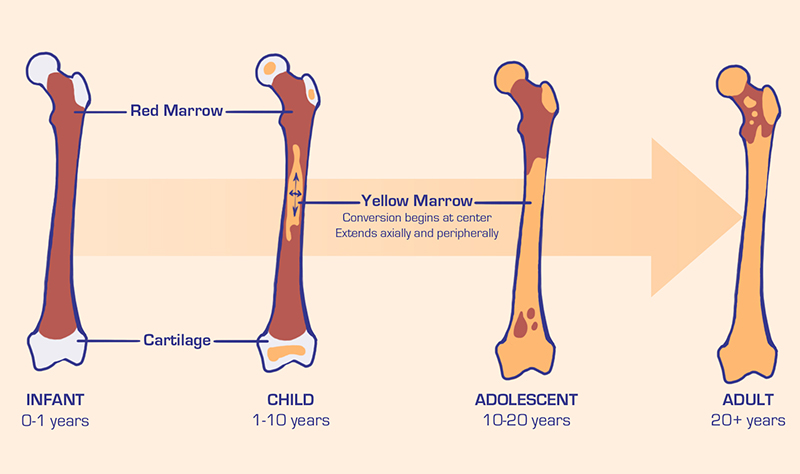SKELETAL SYSTEM (PHYSIOLOGY)
Support and Protection
The skeletal system’s primary function is to form a solid framework that supports and protects the body’s organs and anchors the skeletal muscles. The bones of the axial skeleton act as a hard shell to protect the internal organs—from damage caused by external forces. The bones of the appendicular skeleton provide support and flexibility at the joints and anchor the muscles that move the limbs.
Movement
The bones of the skeletal system act as attachment points for the skeletal muscles of the body. Almost every skeletal muscle works by pulling two or more bones either closer together or further apart. Joints act as pivot points for the movement of the bones.
Hematopoiesis
Red bone marrow produces red and white blood cells in a process known as hematopoiesis. Red bone marrow is found in the hollow space inside of bones known as the medullary cavity. The amount of red bone marrow drops off at the end of puberty, replaced by yellow bone marrow.

Storage
The skeletal system’s cell matrix acts as our calcium bank by storing and releasing calcium ions into the blood as needed. Proper levels of calcium ions in the blood are essential to the proper function of the nervous and muscular systems. Bone cells also release osteocalcin, a hormone that helps regulate blood sugar and fat deposition. The yellow bone marrow inside of our hollow long bones is used to store energy in the form of lipids. Finally, red bone marrow stores some iron in the form of the molecule ferritin and uses this iron to form hemoglobin in red blood cells.
Growth and Development
The skeleton begins to form early in fetal development as a flexible skeleton made of hyaline cartilage and dense irregular fibrous connective tissue. These tissues act as a soft, growing framework and placeholder for the bony skeleton that will replace them. As development progresses, blood vessels begin to grow into the soft fetal skeleton, bringing stem cells and nutrients for bone growth. Osseous tissue slowly replaces the cartilage and fibrous tissue in a process called calcification. The calcified areas spread out from their blood vessels replacing the old tissues until they reach the border of another bony area. At birth, the skeleton of a newborn has more than 300 bones; as a person ages, these bones grow together and fuse into larger bones, leaving adults with only 206 bones.
The process of ossification is quite long and diffcult so I have searched for a video that explains it perfectly.
Comentarios
Publicar un comentario